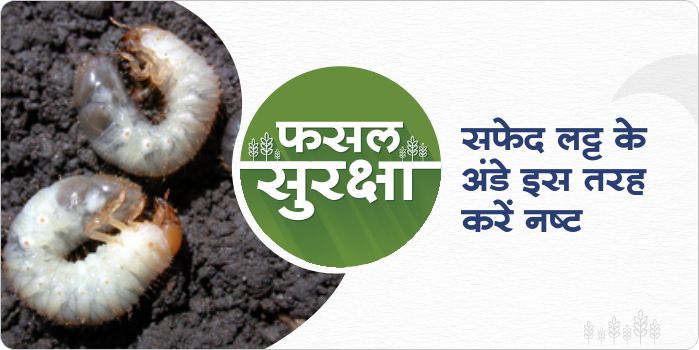Skip to content
- Cobalt is very essential for ruminant animals as it is found in very limited quantities in their body. The lack of cobalt occurs in food items because the soil in which it was grown also lacked cobalt in the soil.
- It helps in the synthesis of vitamin B12, which helps in the formation of red blood cells and growth.
- Lack of appetite due to cobalt can cause weakness, Pica, Diarrhea, and infertility.
Share
- Soil electrical conductivity (EC) is an indirect measurement that has a very deep correlation with the physical and chemical properties of soil. Soil electrical conductivity is an indication of the availability of nutrients in the soil.
- The measurement of soil alkalinity and acidity is also highly dependent on soil electrical conductivity (EC).
- The greater concentration of salts in the soil leaves a detrimental effect on the absorption of nutrients.
- Very low electrical conductivity levels indicate low available nutrients, and very high EC levels indicate nutrient excess. Those with low EC are often found in sandy soils with low organic matter levels, while high EC levels are found in high organic soil content (more clay).
- Soil texture, salinity and moisture are the soil properties that most affect EC levels.
Share
- Good soil means the soil that has an ideal pH value and the amount of nutrients available in the soil is very balanced.
- Good soil is best for plant growth.
- This type of soil particles have very high water holding capacity.
- It holds sufficient amounts of water in it and air circulation is also good in it.
Share
- Cauliflower are sown in the nursery before being transplanted in the main field.
- When Cauliflower nursery is being prepared, the ease of weeding, irrigation should be kept in mind.
- Before sowing, treat Cauliflower seeds with Carbendazim 12% + Mancozeb 63% @ 2.5gram/ kg seed or Carboxin 17.5%+ Thiram 17.5% @ 2.5 ml/kg seed.
- Soil treatment of nursery is very necessary before nursery sowing treatment is done for prevention of soil borne diseases. For this use FIPRONIL 0.3% GR @ 25 gram/nursery and Trichoderma viride @ 25 gram / nursery and seaweed + amino + Mycorrhiza @ 25gram / nursery
- Also keep in mind that at the time of sowing the soil must have sufficient moisture.
Share
- White grubs as the name suggests are white colored insects that live as a grub in a field whose dormancy period is in the winter.
- They initially damage chilli plant roots. Symptoms of white grub include a complete withering of the plant or stunting the growth of the plant resulting in the plant dying.
- Usually this pest should be controlled in the month of June and in the early week of July.
- For this, do deep plowing in summer use Metarhizium culture (kalichakra) along with FYM (2 kg + 50-75 kg) per acre for control of white grub
- But if infestation of white grub is visible even in the immature stage of chilli crop, then chemical treatment can also be done to control this pest.
- use FENPROPATHRIN 10% EC 10% EC @ 500 ml / acre, CLOTHIANIDIN 50.00% WG @ (Dantotsu) 100 g / acre as soil mix.
Share
- Watermelon is the main crop of cucurbits crops .
- Thus it is very important to manage nutrition in this stage.
- Lack of nutrients causes the problem of flower shedding in the watermelon crop.
- And excessive flower shedding greatly affects fruit production in the watermelon crop.
- To prevent flower shedding use Micro-nutrients @ 250gram/acre.
- To prevent flower drop,use Homobrassinolide @ 100 ml/acre or Paclobutrazol 40% SC @ 30 ml/acre.
Share
- Blight: In this disease, dark brown spots are seen on the leaves, spots on the stems are deformed, long, suppressed and purple-black in color. They later merge and surround the entire trunk. Irregular red or brown spots appear on the beans, in the acute stage of the disease, the stem starts to weaken.
- Chemical treatment: Mancozeb 75% WP @ 600 gram/acre or Carbendazim 12% + Mancozeb 63% @ 300 gram/acre or Thiophanate Methyl 70% W / W @ 300 gram/acre or chlorothalonil 75% WP @ 400 gram/acre .
- Biological management: As a biological treatment, spray Trichoderma viride @ 500 g / acre or Pseudomonas fluorescens @ 250 gram/acre.
Share
- In 25-30 days of green gram crop, problems like pest infestation, fungal disease attacks, and stunted growth and development occur.
- To overcome these problems, it is very important to do crop management in 25-30 days of green gram crop.
- To control the pest infestation, spray of Bifenthrin 10% EC @ 300 ml/acre with chlorantraniliprole @ 18.5% SC @ 60 ml/acre
- As a biological control, use Bavaria Basiana @ 250 g / acre.
- Spray Thiophanate Methyl 70% W / W @ 300 gram / acre for control of fungal diseases
- Use as a biological control of fungal diseases by Pseudomonas fluorescens @ 250 gram/acre
- For good flowering and growth in green crops, use Homobrassinolide @ 100 ml /acre as spray.
- Do spray this on the new moon day of April.
Share
- Organic insecticide is a product based on fungi and bacteria, viruses and botanical produce.
- It protects crops, vegetables and fruits from pests.
- They also help in increasing the production of crops.
- Being a product based on organisms and flora, organic pesticides decompose in the soil.
- Bio-pesticides do not cause any harm to health and the environment.
- It is an eco-friendly option as organic pesticide leaves no residue in the soil.
- Organic insecticides control only targeted pests.
Share
- Neem coated urea means that urea is formulated by coating neem on it
- To make neem coated urea, neem oil is applied over urea.
- This coating acts as a nitrification inhibitor. Neem-coated urea is absorbed slowly
- Due to this, nitrogen nutrient is readily available as per the requirement of crops and crop production is also increased.
- Neem coated urea seems to use about 10% percent less urea than normal urea, saving 10% percent urea.
Share










